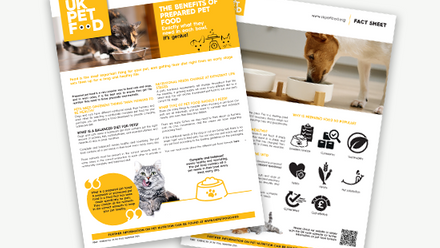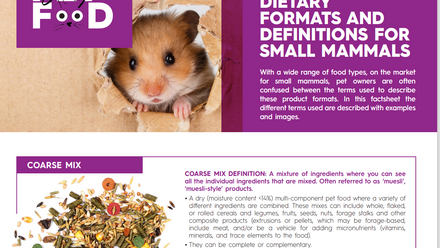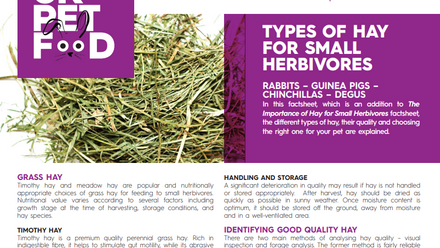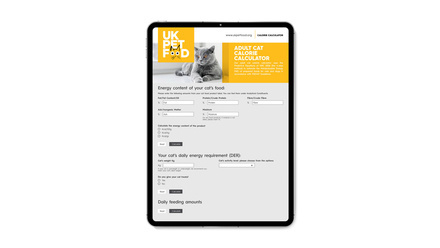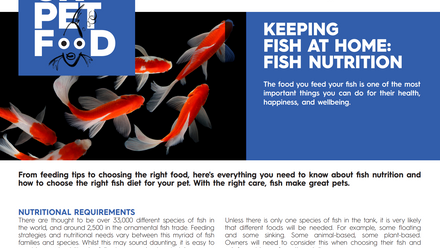Food Allergies & Intolerances in Cats & Dogs
Similar to humans, food allergies and intolerances in cats and dogs are two different conditions which often have similar symptoms. They are both examples of adverse food reactions, however food allergies involve the animal's immune system, while food tolerances do not.
Food Allergy in Cats & Dogs
Food allergy in cats and dogs occurs when a particular component of their pet food (usually a protein) triggers the animal's immune system to react. For example, cells may release histamine, which causes itching.
Food Intolerance in Cats & Dogs
When your cat or dog has a food intolerance, it means that something in their food doesn't agree with their body. It does not trigger the immune system to react like a food allergy does, however, it can cause other unpleasant symptoms for your pet. For example, a dog may not be able to digest cow's milk well.
Common Signs of Adverse Food Reactions in Cats & Dogs
Itchy skin (also known as pruritus) and digestive upsets are the most common symptoms of an adverse food reaction in a cat or dog. For some dogs, they can also experience ear problems.
It is important to remember that these symptoms can also develop from non-food allergies in cats and dogs. You will need to monitor their exposure to other allergens to work out what exactly is causing their symptoms.
Itchy Skin
It is common for people to assume that itchy skin is caused by a food allergy but true food allergies in cats and dogs are relatively rare. In fact, food allergies are responsible for only 1% of all skin diseases in dogs and are only the third most common occurring skin allergy after flea allergy and atopy (sensitivity to an environmental trigger like grass, dust or pollen).
Diagnosis of Adverse Food Reactions
Allergies and intolerances are poorly understood in companion animals such as dogs and cats and don't necessarily cause the same symptoms as they do in humans. Gaining an accurate diagnosis may take time and can be frustrating for pet owners, although ultimately rewarding.
Elimination Diets
With instructions from a veterinary professional, an elimination diet trial should be conducted to remove the suspected food allergen from your cat or dog's diet (including any treats and extras) for an extended period of time. Keeping a food diary and recording changes to clinical signs could be part of the diagnosis process.
‘Challenging’ your pet with a food allergen to see if a reaction occurs is the final step in an elimination diet trial. These trials aim to identify the food allergen. This is hugely beneficial as you can then avoid feeding it to your pet, which means he/she will be able to live a comfortable and healthy life.
Types of Elimination Diets for Cats & Dogs
There are a few options for elimination diets, and your vet can help you decide on the most appropriate option:
Hydrolysed Diets
Hydrolysed diets are composed of very small protein molecules. The aim is for these small molecules not to be recognised by the immune system, reducing the risk of an allergic reaction.
Novel Protein Diets
Novel protein diets include a single protein source your pet has never eaten before and therefore hasn’t developed an allergy to. Examples of novel proteins include duck, salmon, venison and whitefish, or even more exotic ingredients such as kangaroo.
Homemade Diets
Homemade diets are another option to control the ingredients in your pet’s food. Preparing these can be time-consuming and difficult to balance, meaning they frequently provide inadequate long-term nutrition. For this reason, homemade diets are often used as a temporary measure until the right pet food product is identified.
Supporting Food Allergies and Intolerances in Cats & Dogs
Food allergies and intolerances can be severe medical conditions affecting the health and well-being of your pet. Therefore it is always advisable to seek veterinary attention if you suspect these conditions.
It is also essential to read your pet’s food labels carefully. To understand your pet food labels, please refer to our guide, UK Pet Food Labelling Factsheet

